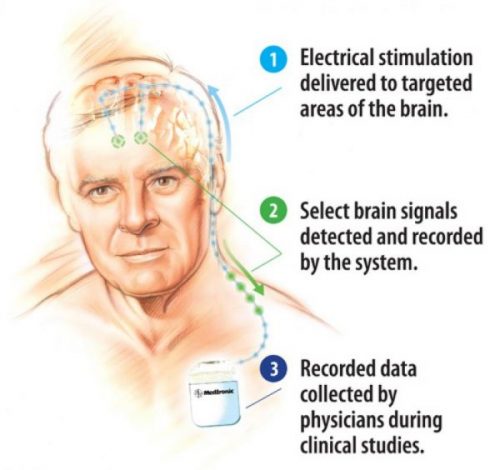Treat Epilepsy, Dystonia, Tremors and Other Neurological Disorders with Deep Brain Stimulation
Deep brain stimulation is a safe and effective surgical procedure used to treat a range of neurological and psychiatric conditions—the primary one being Parkinson’s disease.
The procedure involves implanting electrodes in the brain, releasing electrical impulses that regulate abnormalities. Over the years, deep brain stimulation emerged as one of the most popular surgical procedures for the following neurological and psychiatric conditions:
- Parkinson’s Disease
- Dystonia
- Epilepsy
- Essential Tremor
- Obsessive-Compulsive Disorder

With over 1.2 million U.S. adults suffering from Parkinson’s disease, an increasing number of patients opt for surgical treatment to relieve debilitating symptoms.
Deep brain stimulation effectively blocks impulses that cause neurological dysfunctions, thereby allowing the brain to resume healthy functioning.
Who Is an Appropriate Candidate for Deep Brain Stimulation?
While individuals with neurological conditions are ideal candidates for deep brain stimulation, there are many individuals who exhibit similar symptoms who have not yet been formally diagnosed.
The procedure is also ideal for individuals who exhibit:
- Signs of a Movement Disorder (Tremor, Stiffness)
- A Poor Response to Medication
- Medication-Induced Dyskinesia
How Is Deep Brain Stimulation Performed?
The procedure is divided into two stages—brain surgery and chest wall surgery. During the first stage, a team of neurosurgeons and neurologists use magnetic resonance imaging (MRI) to determine the placement of the electrodes.
This is followed by using general anesthesia to induce unconsciousness. During the period of unconsciousness, neurosurgeons implant a thin insulated wire in the brain. As the surgery proceeds, neurosurgeons and neurologists carefully monitor brain activity to ensure optimal electrode placement.
The second stage requires a chest wall surgery to effectively place the pulse generator near the collarbone. When the generator is activated, it creates electrical impulses that can be turned on and off using a remote control. The type of stimulation and its frequency depends on the patient’s symptoms, medical history, age, brain activity, and his or her overall physical condition.
Over time, patients should begin to notice a relief in their symptoms. They should be able to sleep better and their quality of life should improve. Most patients can gradually ease off medication as they resume normal activities without feeling inhibited.
Advantages of Deep Brain Stimulation
Unlike many procedures that are used to treat neurological and psychiatric conditions, deep brain stimulation does not cause brain damage. In addition, the electrical stimulation is adjustable to keep the patient comfortable. As the patient’s condition evolves, the process can be altered accordingly.
Deep Brain Stimulation at Houston Physicians’ Hospital
Our team of neurologists and neurosurgeons are equipped with years of experience and have the medical expertise to effectively treat Parkinson’s disease, dystonia, essential tremor, and epilepsy using deep brain stimulation. We use state-of-the-art technology and cutting-edge software solutions to perform intricate surgical operations with proficiency and precision.
If you or a loved one suffers from Parkinson’s Disease or other neurological conditions that may be relieved through deep brain stimulation, book an appointment with one of our neurosurgeons for an assessment. You can regain your mobility as well as your physical and psychological functioning. Houston Physicians’ Hospital serves all of Southeast Texas—including South Houston, Clear Lake, League City, Galveston, Webster, and neighboring communities.






